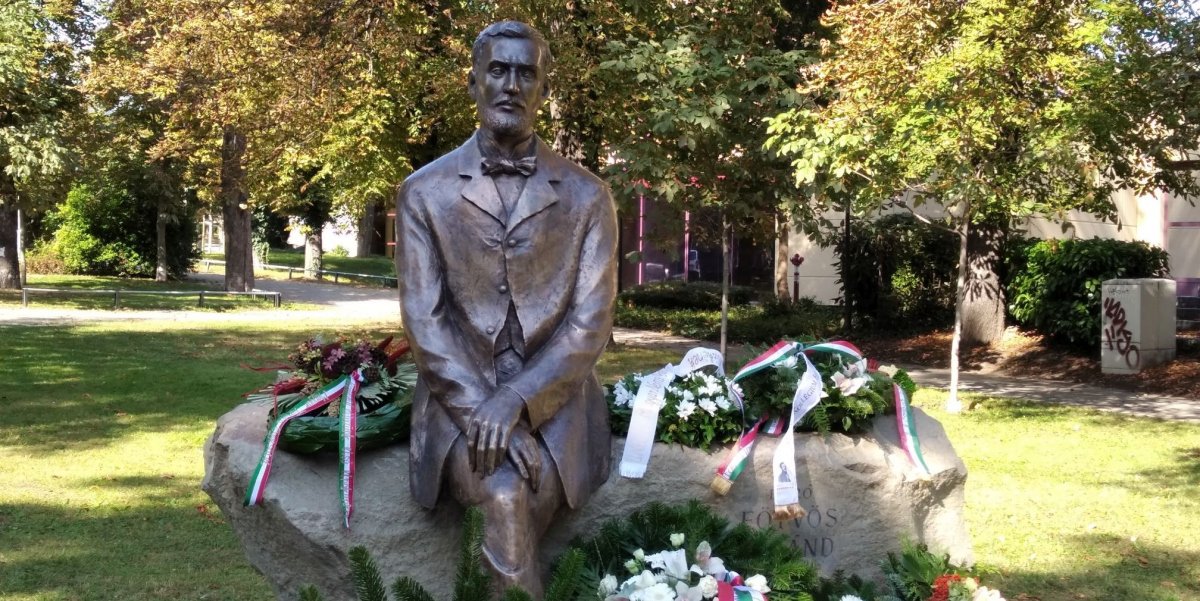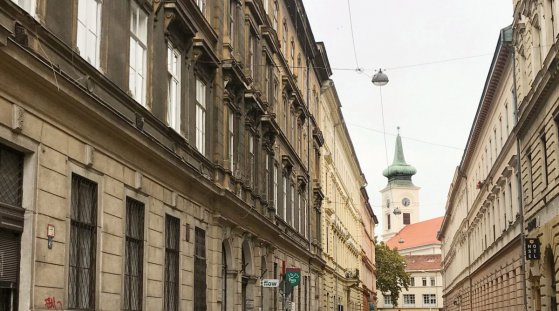 The „intertwined history” of the bridges and the city of Budapest
Which ideas and events have shaped the fate of bridges of Budapest and the cityscape? Alongside many other interesting facts, this question is also answered this newly published book by the Budapest City Archives, which introduces the history of bridges in Budapest.
The „intertwined history” of the bridges and the city of Budapest
Which ideas and events have shaped the fate of bridges of Budapest and the cityscape? Alongside many other interesting facts, this question is also answered this newly published book by the Budapest City Archives, which introduces the history of bridges in Budapest.
Loránd Eötvös
 A statue was erected for Loránd Eötvös, who served universal science with a Hungarian heart
A statue was erected for Loránd Eötvös, who served universal science with a Hungarian heart
October 6, 2021 at 2:00 PM
One of the most famous Hungarian scientists is immortalised in many reliefs and busts in Budapest, but previously he only had one life-sized statue: it was erected in 2016 in Pest, in front of the central building of the University named after him. Now a new statue has been placed in the Gesztenyés Garden in the 12th District of Buda, and the place is closely connected to him as well: his most famous invention, the torsion pendulum was produced in the predecessor of the Hungarian Optical Works operating next door.
A forgotten house – The origins of Eötvös József College
November 4, 2020 at 9:00 AM
A small street near Kálvin Square bears the name of Pál Gönczy, a writer on educational subjects and teacher at the Reformed Secondary School of Pest. In 1895 a small teacher training institute named after Gönczi's former ministerial superior, Count József Eötvös was opened here. At the time it was known as Csillag Street. Loránd Eötvös founded the College, and its first headteacher was Géza Bartoniek. They are the protagonists of the first 15 years of institution's history, but the small building where early students worked with their professors until 1911, was forgotten.
More articles
 The „intertwined history” of the bridges and the city of Budapest
Which ideas and events have shaped the fate of bridges of Budapest and the cityscape? Alongside many other interesting facts, this question is also answered this newly published book by the Budapest City Archives, which introduces the history of bridges in Budapest.
The „intertwined history” of the bridges and the city of Budapest
Which ideas and events have shaped the fate of bridges of Budapest and the cityscape? Alongside many other interesting facts, this question is also answered this newly published book by the Budapest City Archives, which introduces the history of bridges in Budapest.
 The Bridge Report, which brought a turning point in the history of Budapest
A travel report that changed the history of Pest and Buda, as well as Hungary. The little book contributed to the change of half a thousand years of legal customs and the implementation of an investment of unprecedented size and technical quality. This book was The Bridge Report [Hídjelentés in Hungarian].
The Bridge Report, which brought a turning point in the history of Budapest
A travel report that changed the history of Pest and Buda, as well as Hungary. The little book contributed to the change of half a thousand years of legal customs and the implementation of an investment of unprecedented size and technical quality. This book was The Bridge Report [Hídjelentés in Hungarian].
 Drama on the university wall - The heroic monument was planned 95 years ago
In the constant hustle and bustle of the Egyetem Square in Pest, the students may not even notice the monument that decorates the short section of wall between the church and the central building of ELTE. However, it commemorates their predecessors, the heroes who fought for their country in World War I, and those who heroically helped them. The first design of the dramatically collapsing soldier was born in 1928, ninety-five years ago.
Drama on the university wall - The heroic monument was planned 95 years ago
In the constant hustle and bustle of the Egyetem Square in Pest, the students may not even notice the monument that decorates the short section of wall between the church and the central building of ELTE. However, it commemorates their predecessors, the heroes who fought for their country in World War I, and those who heroically helped them. The first design of the dramatically collapsing soldier was born in 1928, ninety-five years ago.

